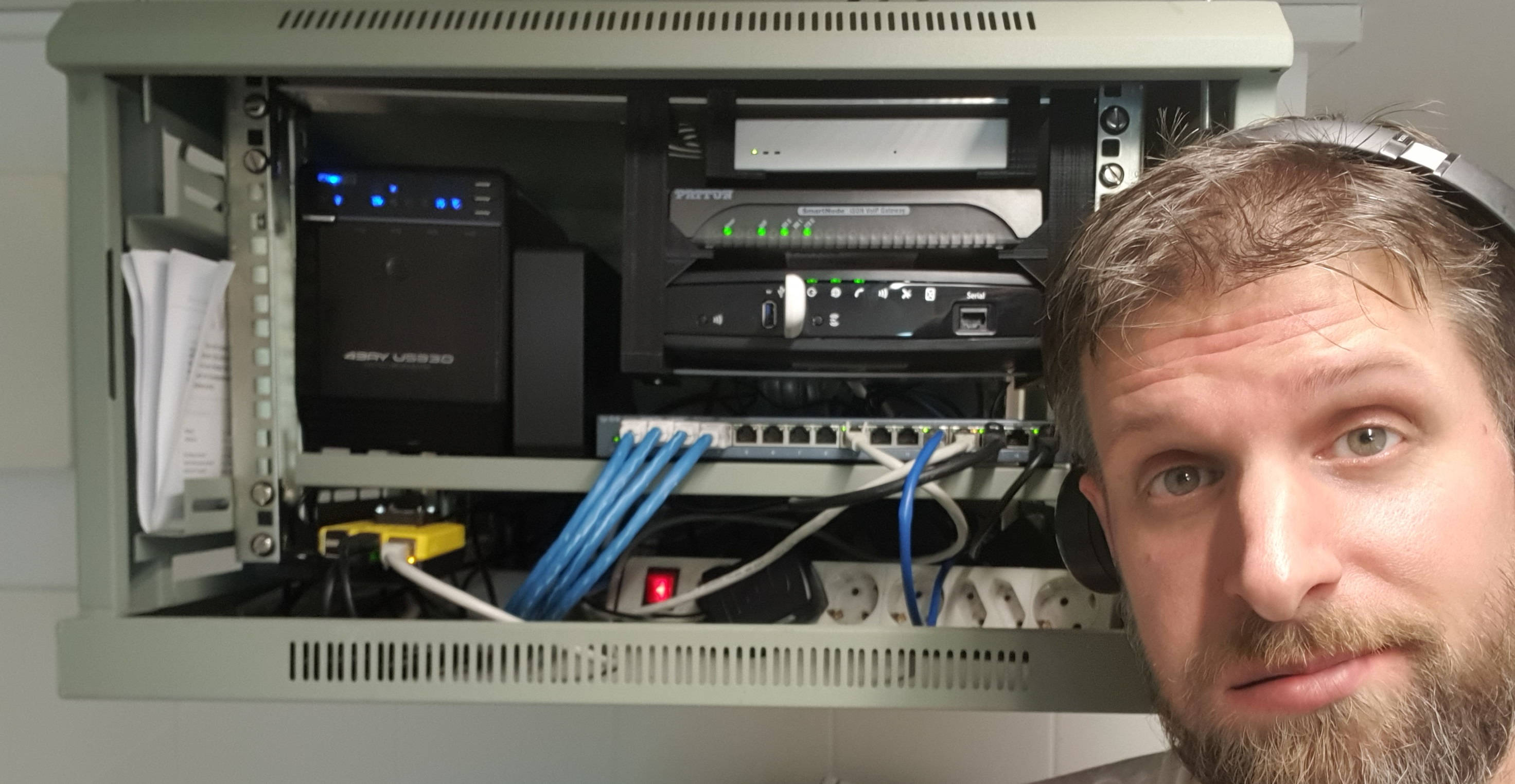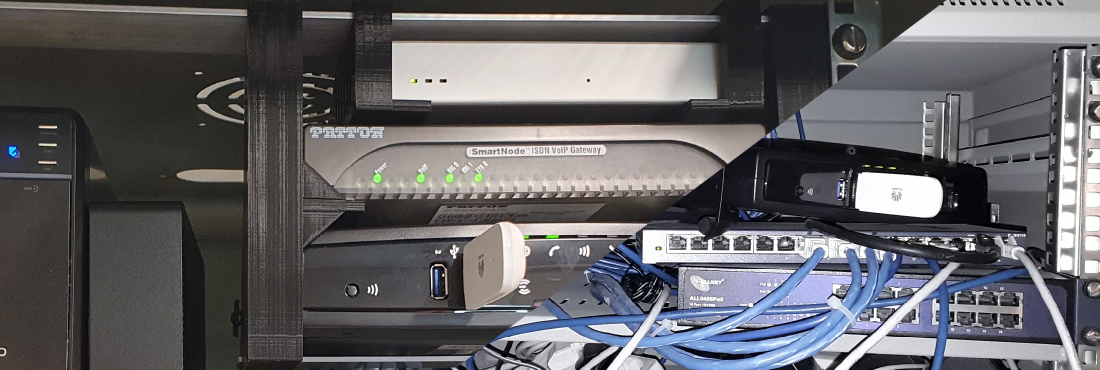Order in the Serverrack
While a customer's server cabinet had every option for installing 19-inch rack hardware, the business internet and telephony solutions offered to small and medium-sized businesses usually include the same modems and servers as those offered to private customers. Not that it's technically necessary to install larger devices here, the biggest problem for me is that consumer modems are often overly sleek and difficult to stack.
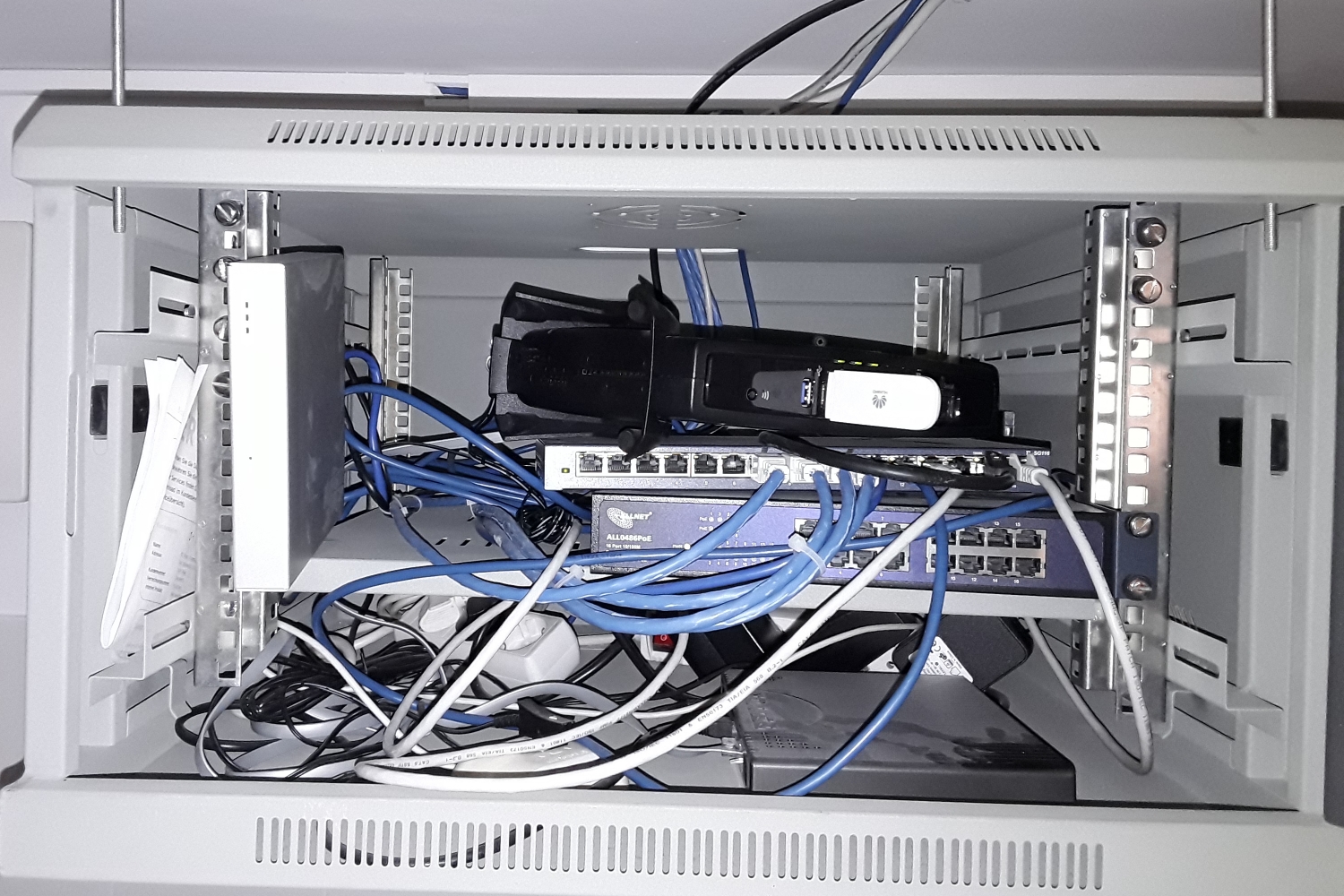
This setup consisted of two modems and two servers: a DSL modem for the internet and an ISDN modem for the telephone system, a server for administering the VoIP phones, and a server for backing up the NAS. There was enough space in the server cabinet to accommodate the backup storage, but not enough space to have all the devices stand upright. Since the "attractive design" meant it wouldn't be aesthetically pleasing or practical to stack everything on top of each other, I got creative.
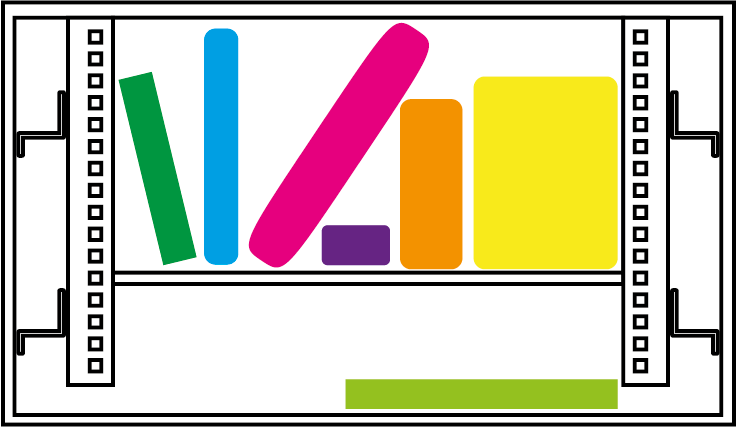
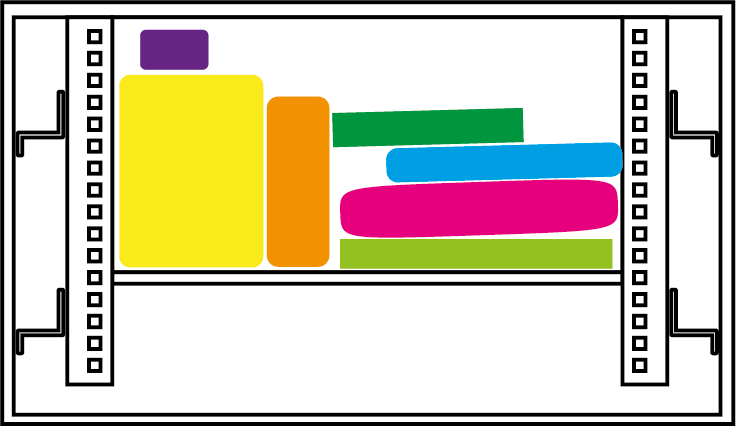
Another design I built, using a 19" mount for a rack tuner, was easily adapted to a rack-compatible support rod. Hanging brackets on an aluminum rod would hold all modems and servers flush with the front. Rubber bands would pull the brackets together, and the devices would be clamped onto them. This even makes it possible to remove the entire mounting device without having to unplug a device. A 2-tier mount was designed for the two modems, which are similar in width. The smaller telephone server received its own mount. The backup server on a Raspberry Pi has its own mount on the left rack rail. The rack mount and the lower shell of the Raspberry Pi case were adapted for this purpose.
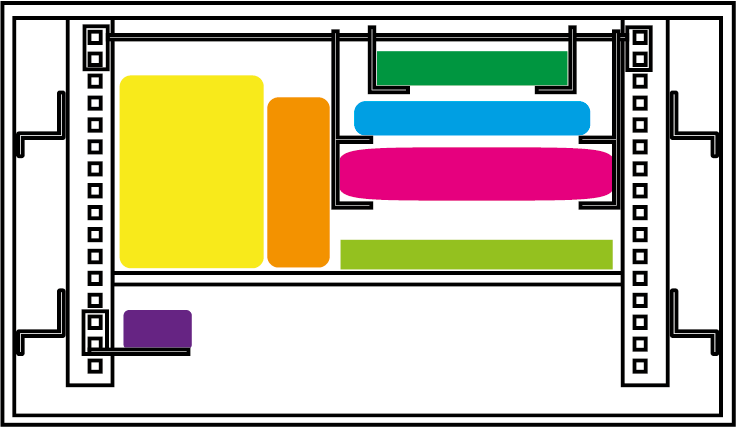
The brackets were 3D printed in ePLA. A 5cm wide aluminum profile was chosen as the connecting rod. The rubber bands were measured on dummy objects, and the ends were sewn into loops so that they could be held taut with fixing pins on the sides of the brackets.
After the assembly, order and structure could finally be brought into this server cabinet after years.
